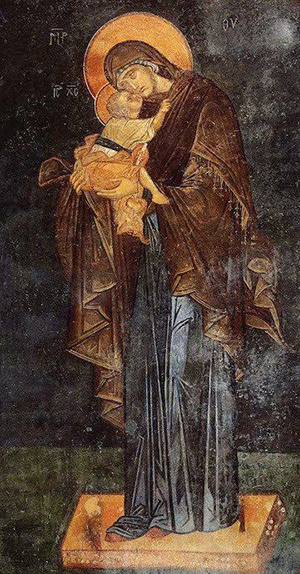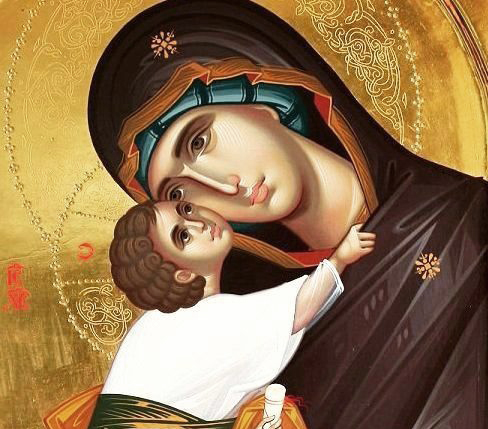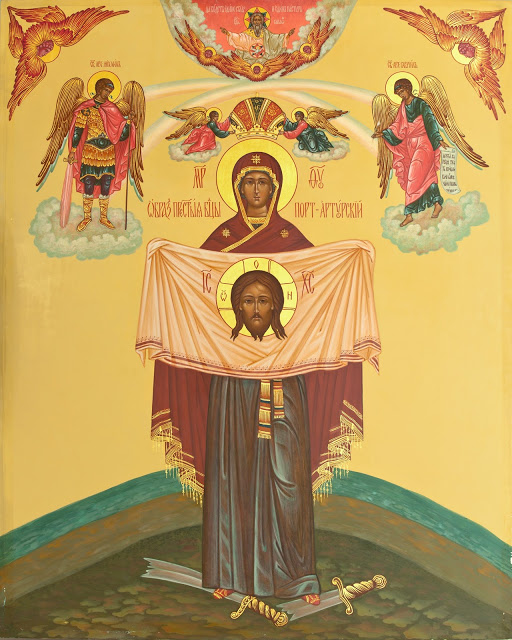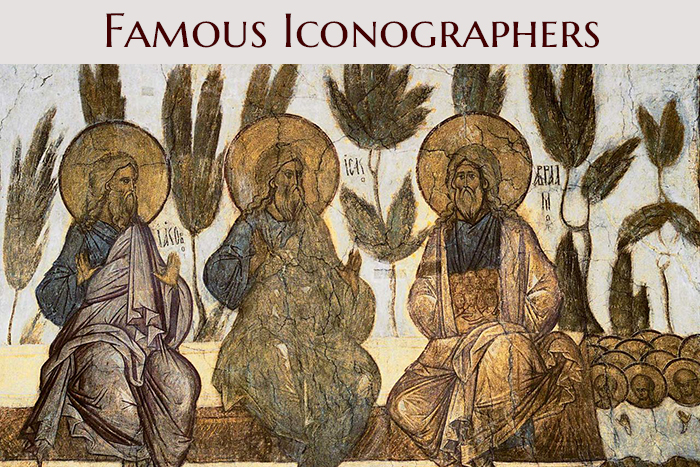
Iconography is a unique phenomenon in medieval art that carries one’s consciousness away into the spiritual world. Everything matters: not only the image itself but also its semantic content. Whatever is depicted is a symbol, and the details and colors of the clothes are not an exception.

Traditionally, the Lord Jesus Christ, the Mother of God, and the saints are depicted on icons in robes that were typical of the times of the Roman Empire and follow late Greek and Byzantine fashion. Christ, for example, is dressed in a chiton, a garment that looks like a long shirt or a dress, and a himation is draped over it. In fact, the himation was just a rectangular piece of cloth that was put on top of the chiton like a cloak. This cloak served as a blanket for the poor during their sleep (Exodus 22:26-27). The fact that it had a significant size can be deduced from the fact that the soldiers who crucified Christ and divided His clothes among themselves divided the cloak into four parts: one part for each soldier (John 19:23). Many saints of the Old Testament and the Gospel times wear chitons and himations but the Savior’s garment has some distinct features: the laticlave (a vertical stripe) on the fore part of the chiton, which points at his royal authority. In the iconography of the Savior, the laticlave is a sign of the royal dignity, purity, and perfection of the human nature of Christ.
The colors are also symbolic: the Savior’s chiton is usually painted red, and his himation is blue. These colors symbolize the human and divine natures of Christ. While blue is also the color of purity and chastity that reminds us of heaven, red is the color of the blood shed by our Lord for the sake of our salvation. In addition, the garment of this color is yet another reference to the royal dignity of the Savior because only kings could wear purple or reddish violet clothes in antiquity.
Sometimes the Savior is depicted wearing a different color to emphasize His divine qualities. The vestments of Baby Jesus on the icons of the Mother of God are almost always golden yellow, of various shades and colors, and are decorated with gold hatching. By this, the Holy Church singles out His infancy from the one that is common to all men and points to His co-eternal and co-reigning nature with God the Father.
The Savior’s shoes, as well as those of the prophets and apostles, are sandals consisting of leather soles attached to the feet with straps. There are icons where Christ is painted as the King of Glory who sits on the throne. In that case, His vestments are also often golden yellow with gold hatching. As the King of Kings, the Lord is portrayed in the Byzantine imperial garments, on the throne and with a crown on his head. As the Great Bishop, the Lord is painted wearing a sakkos and an omophorion.

It is customary to depict the Mother of God on icons wearing the mantle, which was worn by married women according to Jewish tradition. It was worn on top of a small light shawl that covered the hair and was a rectangular cloth or cape that was big enough to cover the head and almost the entire body of a woman. The authentic mantle of the Blessed Virgin Mary was kept in the Blachernae Church in Constantinople since 474.
The colors of the Mother of God’s mantle are dark red to remind us of her royal heritage and her travails. In addition, the royal crimson color of the mantle highlights the fact that the Virgin is the Mother of Christ the King.
The mantle is trimmed with gold edging and fringe in honor of the Queen of Heaven. Gold symbolizes her abiding in the divine light and her participation in the glory of the Lord. She is often portrayed wearing a tunic, which is an undergarment, mostly with narrow sleeves. It is long and reaches the floor. Its color on the icons of the Blessed Virgin is blue to symbolize her virginity. However, it can be of different shades, even dark blue and dark green.
The mantle of the Most Holy Mother of God on the icons is decorated with three symbolic stars – on the forehead (the symbol of her virginity at the time of the Savior’s birth), on her right shoulder (the symbol of her virginity before the Savior’s birth), and on her left shoulder (the symbol of her virginity after the birth of Jesus Christ). On some icons, the figure of the Divine Child overlaps one of these stars, signaling the incarnation of the Son of God, the Second Person of the Holy Trinity.

There is one more detail in the attire of the Mother of God – the cuffs, which symbolize the allegiance of the Mother of God (and in Her person also of the entire Church) to the Head of the Church, the High Priest – our Lord Jesus Christ.
The icon is a medium between the human being and the invisible realm, so if you learn to look carefully and examine its details, it can open up the spiritual Heaven to you.



